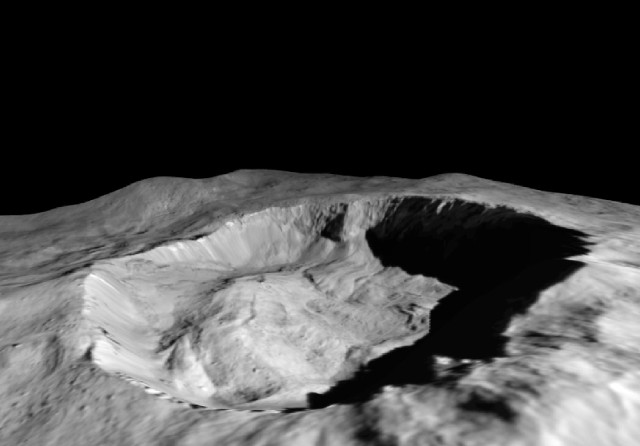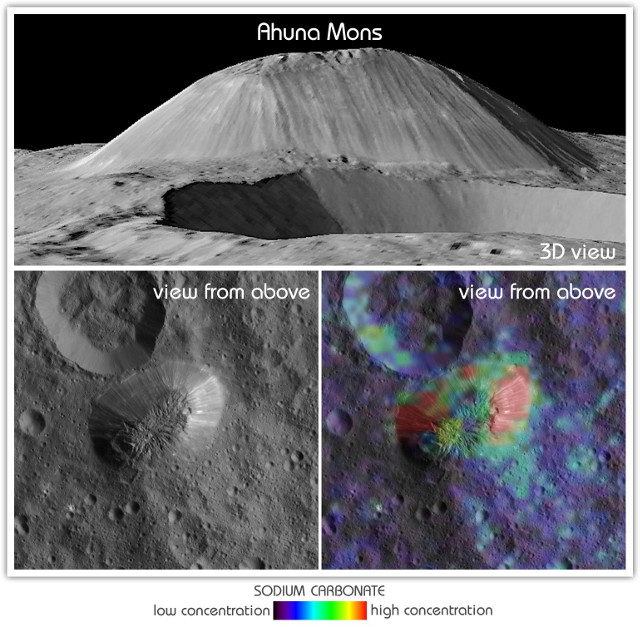
Two articles published in the journal “Science Advances” describe two researches connected in different ways but linked to the presence of water on the dwarf planet Ceres. Two teams of researchers, but with many members in common, led by scientists from the National Institute of Astrophysics (INAF) in Rome, Italy, used observations made by the VIR spectrometer on board NASA’s Dawn space probe to find evidence of the presence of ice of water in Crater Juling and to map the distribution of carbonates, salts whose origin is linked to the presence of liquid water, on Ceres.
In the little more than three years since the Dawn space probe entered the dwarf planet Ceres’ orbit, it collected many data concerning the presence of water. It was a surprise because it seemed poor in water but the data collected progressively offered a very different image of Ceres.
In this regard, in December 2016 two articles published in the journals “Science” and “Nature Astronomy” described two studies that reported evidence that in the dwarf planet Ceres’ underground there’s much more ice than expected and that it may exists for very long times.
The new researches published in “Science Advances” are based on the measurements made with the VIR (Visible and infrared spectrometer) instrument. It was provided by the Italian Space Agency and managed by INAF scientists, who for this reason are personally involved in the analysis of the data it collects.
One of the articles highlighted the abundance of water ice on the north wall of Crater Juling, which has a diameter of about 20 kilometers (about 12 miles). The north wall is about 4 kilometers (about 2.5 miles) high and is almost vertical with a position that almost never receives sunlight but only light reflected from the crater. Observations made between April and October 2016 show an increase in ice on that wall.
Andrea Raponi of INAF, the article’s first author, explained that the ice could be under a thin layer of dust on the bottom of Crater Juling and the solar radiation could make it sublime. The generated vapor probably condenses on the crater’s cold wall. The correlation between the increase in ice and the growing solar irradiation on the crater is the main indication that this is the mechanism in place.
The other article concerns the maps of the distribution of carbonates on the dwarf planet Ceres. These are mainly magnesium carbonates, evenly distributed over almost its entire surface. In some areas, natrite, a sodium carbonate, was identified instead, such as in the cryovolcano Ahuna Mons, illustrated in the image below (NASA/JPL-Caltech/UCLA/MPS/DLR/IDA/ASI/INAF).
Filippo Giacomo Carrozzo of INAF, the article’s first author, explained that the results suggest the presence of water in the material that covers the surface of those areas. He mentioned thermonatrite and trona as the sodium carbonates that ebst explain VIR’s detections. These compounds have water molecules inside them and in some areas they have been observed together with water ice deposits.
These sodium carbonates are not stable on the surface and in Ceres’ conditions they lose their water within a few million years. This means that they must have formed relatively recently. In essence, it’s a new confirmation of the fact that Ceres is a small world still active from a geological and chemical point of view.


